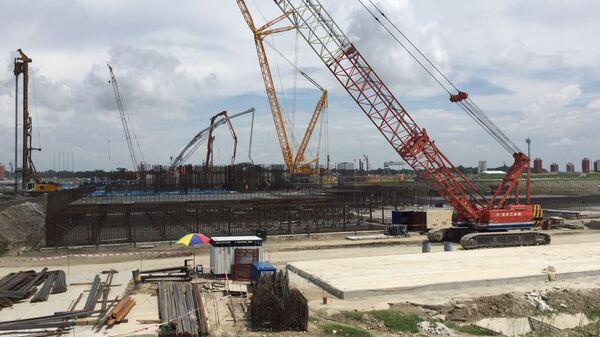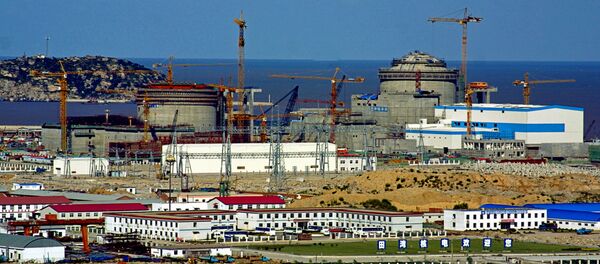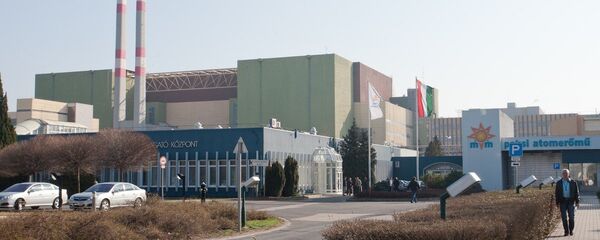Rooppur, Bangladesh (Sputnik) – The ASE Group of Companies, a unit of Russia’s Rosatom State Nuclear Corporation that is managing the construction of Bangladesh’s first nuclear power plant says that it is confident of completing the project on time while keeping quality and safety as its topmost priorities.
In an exclusive conversation with Sputnik, Senior Vice President for International Project of ASE Group of Companies Alexander Khazin informed that the power units of NPP Rooppur will use the VVER-1200 reactors of the 3+ generation. These innovative units with improved technical and economic characteristics would fully comply with the latest IAEA safety standards.
Sputnik: Please tell us the current status of the work going on at the Rooppur Nuclear Power Plant?
READ MORE: Rosatom to Engage Indian Experts in Bangladesh Rooppur NPP Construction — CEO
Sputnik: Please tell us how different companies are working in harmony on this truly international project?
Alexander Khazin: Presently, 4,500 people are involved in the construction work. Among them, one third are from Russia, other specialists are from companies of Bangladesh, India, France, Germany. By 2020-2021 when the start-up and adjustment works are likely to start, around 12,000 people will be involved. We have the system in place that allows us to work for the result — the successful commissioning of the Rooppur Nuclear Power Plant. That makes the ambiance friendly and positive. The system is structured to let people work in one information space, to use common standards in Russian and English language.
For the nuclear industry, it is a stellar example of international cooperation. Rosatom is willing to share its experience, expertise, and solutions regarding all aspects of nuclear power plants' construction, as well as to provide the necessary support for personnel training.
READ MORE: Cutting-Edge Security Measures on Modern Russian Nuclear Power Plants
Sputnik: How will this project aid Bangladesh's economy?
Sputnik: Safety of Nuclear Power Plants is a global concern after the Fukushima nuclear accident. What safety measures have been taken into consideration at Rooppur?
Alexander Khazin: On June 21, 2016, the BAERA issued the license to the Bangladesh Atomic Energy Commission (BAEC) to initiate preparatory work at the Rooppur NPP site after 63 inspections ranging from air, soil and seismic surveys to environmental impact assessment.
At the same time, BAERA gave its nod for the project. Each phase of the Rooppur Nuclear Power Plant's construction is being and will be implemented under the strict supervision of the International Atomic Energy Agency (IAEA) and Bangladesh Atomic Energy Regulatory Authority (BAERA).
The Russian nuclear power plant projects use light water reactors of the VVER type (water-cooled water-moderated shell-type reactors with pressurized water).
At present, VVER nuclear power plants are under various stages of construction in Iran, Belarus, Hungary and other countries. This type of reactors uses water both as a neutron moderator and as a reactor coolant.
READ MORE: Bangladesh’s First Nuclear Power Plant Likely to See Russia-India Collaboration
Sputnik: What are the main advantages of the VVER-1200 reactors over other existing technologies?
Alexander Khazin: Presently, VVER-1200 is the most powerful reactor in Russia with three main advantages: high productivity, long service life and safety. The main feature of the VVER-1200 project is a unique combination of active and passive safety systems that provide maximum resilience to external and internal impacts, including tornadoes, hurricanes, earthquakes and air crashes.
The VVER-1200 generation 3+ technology was first implemented at Novovoronezh NPP-2 in Russia, where the first power unit of that type was connected to the grid on August 5, 2016, marking the transition to the use of the generation 3+ reactors. In March 2018, another VVER-1200 reactor was connected to the power grid and started power production at Unit 1 of the Leningrad NPP-2.







